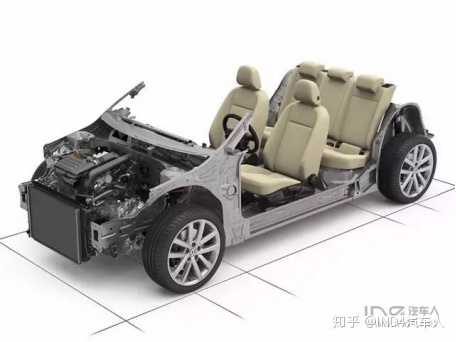INVENTION OF THE CAR RADIATOR
WHY DO CARS NEED RADIATORS
Only 30-40% of the heat released by combustion in the cylinder of a car engine becomes effective work, and the others are dissipated in various forms. Among them, 20-30% of the heat is released into the atmosphere through the cooling system (as shown in the figure below).
There are two types of cooling methods for car engines: air-cooling and water-cooling. Air cooling has low heat dissipation capacity and is only suitable for some low-power engines. Today, almost all car engines use water cooling.

The car radiator is the main component in the water cooling system, and it is responsible for dissipating the heat in the coolant to the atmosphere. The radiator is usually composed of a water chamber, a core, and a radiator cover.

HOW TO DISSIPATE HEAT IN THE FIRST CAR
Car radiators grew with the invention of cars. In the history of the world's automobile development, the German engineer Karl Benz generally made the first gasoline-powered tricycle in 1886 as the beginning of mankind's modern automobile.
The car uses a two-stroke gasoline engine and has some basic features of modern cars, including a water cooling system. But there is no radiator, relying on a long and curved pipe to circulate water to ensure the cooling of the internal combustion engine. This type of coiled radiator has low efficiency, consumes a lot of water and requires a bulky cooling circuit, which is far from satisfying the demand.

MAYBACH INVENTED THE CAR RADIATOR
The first real car radiator in the world was the honeycomb radiator invented by Wilhelm Maybach in 1901. Wilhelm Maybach (February 9, 1846-December 29, 1929) was a German engine designer and industrialist.

In 1890, Daimler and Maybach founded the Daimler Engine Company together. In 1894, Maybach, together with Daimler and Daimler's son, designed the Phoenix engine, creating a precedent for the use of four-cylinder engines in automobiles. At the same time, Maybach is also working hard to solve the problem of engine heat dissipation, completing a number of inventions such as tubular radiators with fans and honeycomb radiators.

In 1897, Maybach took a key step in solving the problem of engine cooling. He proposed a honeycomb structure composed of a large number of small square tubes. The copper wires were inserted between the tubes to form a gap as a coolant channel. Solder together. The inside of the tube is cooled by air to cool the coolant. This constitutes an efficient heat exchanger, which can significantly reduce the amount of coolant.
In 1900, Maybach designed a new racing car Mercedes 35HP. The prototype was completed at the end of the year. It has 35 horsepower and a top speed of 75 kilometers per hour. The car was exhibited at the second auto show in the United States the following year and caused quite a stir. Throughout 1901, Jelinek drove it to win many championships in the world.
The production version of this car was officially released in 1902. Based on its invincible performance on the field, the car was sought after by the upper class in Europe as soon as it went on the market and won a large number of orders. Mercedes 35HP is recognized as the first modern car in history. It has a front engine and radiator, a streamlined profile, a low center of gravity, a long wheelbase, a tilted steering column, front and rear wheels of the same size, and many other new designs. It is regarded as the world's first modern car, which makes the car bid farewell to the era of "motorized carriage". Maybach is therefore known as the "king of automotive design."

In order to dissipate heat for the 5.9-liter inline four-cylinder gasoline engine, Mercedes 35HP installed a Maybach-invented honeycomb radiator (see the picture below) in the front of the car, consisting of up to 8,070 small square tubes, each with a size of 6×6 mm . Solder together to form a rectangular radiator core. There is a small fan behind the radiator to improve cooling efficiency at low flow rates. Previously, inefficient coil heat sinks were used in cars.

Later, he improved the design and changed the square tube into a round tube. The two ends of the tube were pierced into a hexagon, and the ends of the hexagon were welded together by soldering. Save copper wire. However, the internal water flow speed of the honeycomb radiator is slow, which is easy to accumulate; the welding seam is long, which is easy to leak; and the cost is high and the maintenance is complicated. Therefore, it was later replaced by a tube-fin radiator.


















 Click to start!
Click to start! 